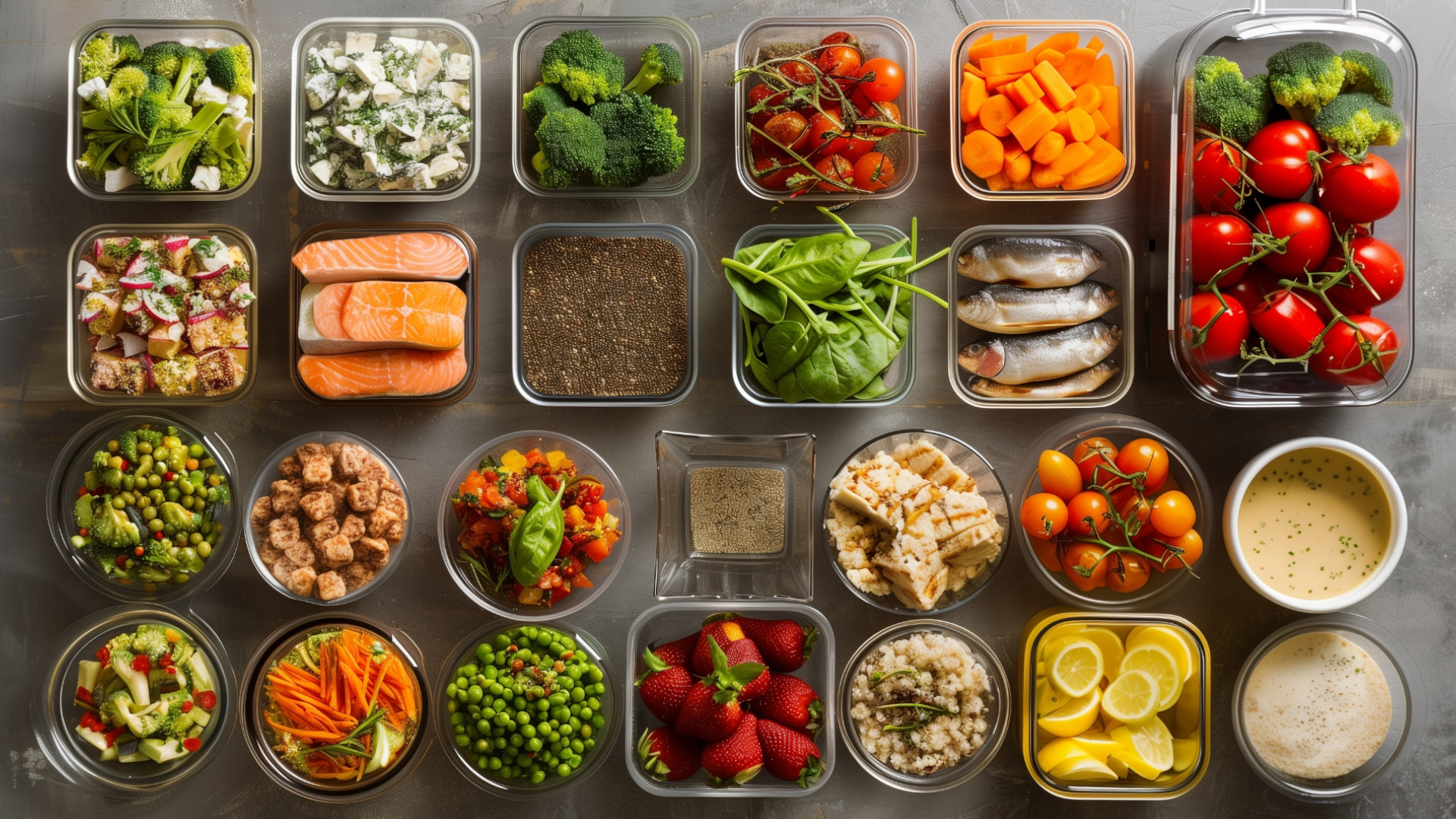Hack Beast Mode |
One of the big differences between people who get results in the gym and those who struggle to achieve gains is that they track what they eat.
Yes, they lift heavy and take the right supplements at the right time, but calculating the amount of food they consume makes the real difference.
Food is fuel, after all.
And just like a car needs a certain amount of diesel or electric power to get from A to B, our bodies require specific amounts of the correct foods to achieve optimal muscle growth – as it also does for weight loss or physical maintenance.
General guidelines suggest that men should be consuming 2500 calories per day, whereas women should aim for around 2000. This might be all well and good as a rough estimate for somebody with no interest in their health and fitness, but to achieve real and lasting results in the gym, we’re going to have to get a bit more specific.
Why is how much you eat important?
It sounds pretty intuitive, but it bears repeating that eating too much food (particularly the wrong kinds) will lead to weight gain. However, we can strategically use this fact of biology to our advantage by using those extra calories to promote muscle growth.
The flip side to this is that not eating enough will stifle muscle growth, weaken performance, and lead to lower energy levels – none of which are ideal for building the body you want.
Straying just over or under your optimal amount of calories isn’t the end of the world if it happens on rare occasions, but if it happens regularly, then the impact will intensify. Those minor differences soon add up – as anybody who has noticed the slow creep of a growing belly will surely recognize.
The key to ensuring this doesn’t happen is to calculate the exact amounts of different food types your body needs to meet your goals each day, then stick to it consistently.
To do this, let’s take a look at how you can determine what your optimal intake should be.
How to calculate how much you eat

First, we must look at how much energy you typically exert on any given day.
Only once you’ve calculated your energy expenditure will you be able to see how much energy you need to consume in the form of calories – taking into account your goals and your body type.
The best (and easiest) way to do this is by using a TDEE calculator.
What is a TDEE calculator?
Before we make the calculations (don’t worry, there are no complex maths for you to do here if you don’t want to) we should probably define TDEE. This stands for your
Total Daily Energy Expenditure.
As well as measuring the calories you burn during a workout, the TDEE also takes into consideration the energy your body uses to function during your daily life (things like breathing, digestion, circulation, etc.) – this is known as your Basal Metabolic Rate, or BMR, and is a much more beneficial metric to consider than BMI (Body Max Index) is.
All you need to make the calculation are your:
- Height
- Weight
- Age
- Gender
- Activity level (i.e how much exercise and movement you do weekly)
Plenty of TDEE calculators are available for free online, and the majority of them give you the choice of inputting your height and weight in metric and imperial measurements, whichever you prefer.
Just pop your information into the calculator, which will give you your TDEE.
Simple! As we mentioned earlier, there needn’t be any hard arithmetic necessary on your part.
However, if you did want to work out your TDEE manually, there are several different equations that you could use. For example, the Mifflin-St. Joer equation uses the following formula to give your BMR:
For men: (10 x weight in kg) + (6.25 x height in cm) – (5.68 x age in years) + 5
For women: (10 x weight in kg) + (6.25 x height in cm) – (4.33 x age in years) – 161
Next, you multiply your BMR by one of the following numbers, depending on your usual level of activity during the week:
- Sedentary lifestyle (little or no exercise) = BMR x 1.2
- Lightly active (light exercise/sport 1-3 times per week) = BMR x 1.375
- Moderately active (moderate exercise/sport 3-5 times per week) = BMR x 1.55
- Very active (hard exercise/sport 6-7 times per week) = BMR x 1.725
- Extremely active (hard exercise/sport 6-7 times per week, plus physical job) = BMR x 1.9
Again, these numbers may differ from source to source, but we find that the ones above are excellent ones to use (and tend to be the most common).
Let’s use a 30-year-old, 180cm tall man weighing 80kg as an example (we’ll call him Jim). His stats would give us the following:
(10 x 80) + (6.25 x 180) - (5.68 x 30) + 5
This works out to be:
800 + 1125 - 170.4 + 5 = 1759.6
Let’s also say Jim is moderately active. This gives us a final number of:
1759.6 x 1.55 = 2727.38
So, rounding down to make things easier, Jim’s recommended daily intake is around 2700 calories.
As you can see, working out your BMR and TDEE looks much more complex when viewed in this way, so we definitely recommend using one of the online calculators if this feels a bit intimidating.
Do bear in mind that this calculation is just an estimate. However, once you have your number and set your macros based on this, you can adjust accordingly if you find that you aren’t getting the results you expected.
OK, now that you have your TDEE, let’s take a look at how much food you should be eating.
How to calculate macros

When we talk about how much food you should eat each day, it isn’t enough to just look at calories. We need to break it down into macros.
If you’re unfamiliar with the term, don’t worry! All we mean by macros are the three macronutrients (protein, fat, and carbohydrates) and how you can split those up across each meal.
The reason it’s worth breaking down food consumption in this way is because the macros all have different supporting functions for your body. It would be no good if you ate your perfect amount of calories, but they all came from mashed potatoes – you’d need some protein and fat in there too.
Each of these macronutrients also provides a different amount of calories per gram, which will come into play when you start designing your personal muscle-building nutrition plan:
- Carbs = 4 calories per gram
- Protein = 4 calories per gram
- Fat = 9 calories per gram
Now we’ve seen a bit more about macros, we can use the number that you calculated above to see what you should be eating each day.
Sticking with Jim as an example, the 2700 calories recommended for his age, weight, height, and activity level are what he should be eating if he is looking to maintain his current shape.
To lose weight or build muscle, that number needs to be tweaked.
For example, to lose weight, Jim could either eat 500 calories less per day or start by cutting out 10-20% off of his number to see how that goes first.
Likewise, by eating an extra 500 calories per day, or by increasing the amount by around 10-20%, he will be able to bulk up and put on some muscle.
To use a nice round number, we’ll say that 3000 calories per day is ideal for Jim to add some muscle mass.
Now that we have that number, we can finally break down where those 3000 calories should come from based on a desired goal.
A good starting point is to split your daily food consumption into the following percentages of carbs, protein, and fats:
- 40/30/30 for weight gain
- 40/40/20 for weight loss
- 40/30/30 for weight maintenance (although this is the same ratio as for weight gain, the calorie amounts will differ)
This might not be the perfect ratio for you, but it does provide a good framework to build on. From here you can simply increase or decrease various macros to find the sweet spot that works for your goals and body type.
For example, if you are a naturally-skinny ectomorph, you will have a faster metabolic rate and a higher carb tolerance. Therefore a 55/25/20 (carbs/protein/fat) percentage split could be a better place to start.
If you’re a mesomorph, your athletic physique lends itself well to muscle growth, so you might find more success with that suggested 40/30/30 (carbs/protein/fat) ratio.
Or if you’re a big and broad endomorph, a 25/35/40 (carbs/protein/fat) split will likely suit your slower metabolism and a low tolerance for carbs.
This might all seem like a lot to take on board at first, but trust us: it is worth it!
Once you go through the calculations above, you’ll soon be able to see how your new macro split works for you and then adjust accordingly if necessary.
And now that you know how much you should be eating to reach your goals, you’ll be able to plan your muscle-building diet.
Over 299,434 purchases
Over 509,389 bottles sold
Over 30,563,340 pills taken









